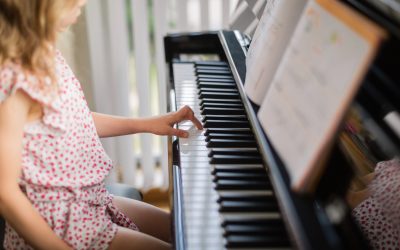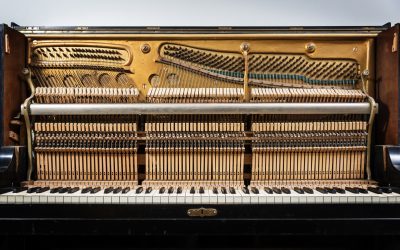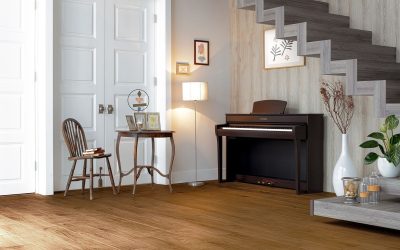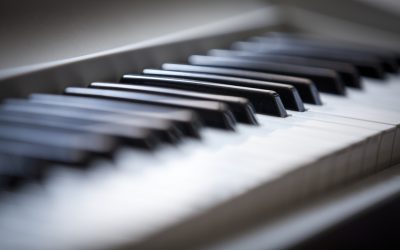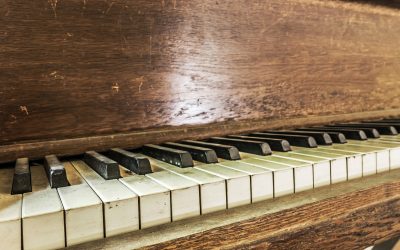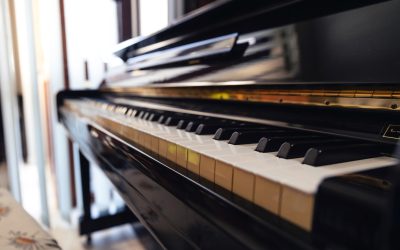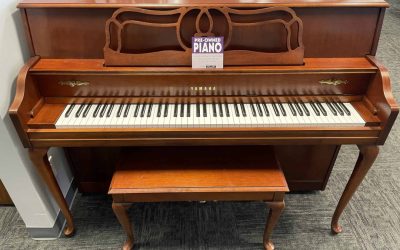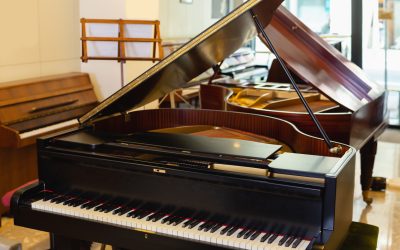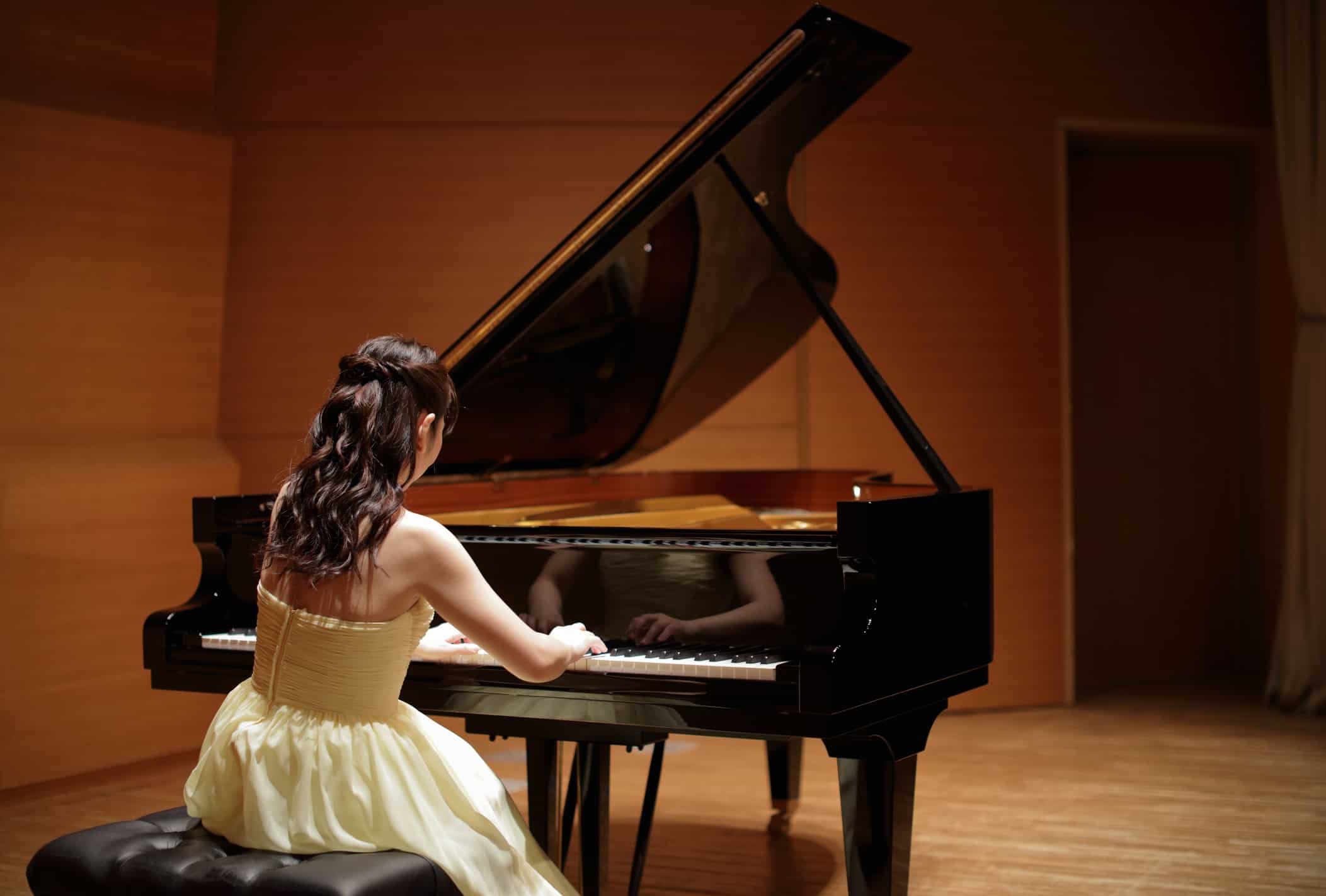
Piano recitals, especially for younger students, often have a reputation of being a little blasé. However, with the right preparation and innovation, a piano recital can be a captivating, elevated experience for its attendees.
10 Tips for a More Engaging Piano Recital
In the article below, we offer 10 tips for planning and presenting a piano recital that is exciting and engaging for students and attendees alike.
1. Choose the Right Venue
One of the most important decisions in planning an engaging piano recital is to choose the appropriate venue. You’ll want a place that has a stage and seating area, of course, but the most important need is a high-quality instrument with well-designed acoustics. After all, even beginning piano players will benefit from an in-tune, pleasant-toned piano. As an example, many piano stores, such as the Piano Gallery, offer a recital hall with a high-performance piano and stage setting. It is in the piano store’s best interest to provide a positive performance experience as it brings traffic into the store and offers an opportunity to present the quality and expertise within their showroom.
2. Diverse Repertoire
While you’re likely educated enough in music that you recognize the nuances of classical piano music, but for some audience members, too many songs in the same genre can start to sound the same. For a more engaging piano recital, consider including a more diverse repertoire of music. Some piano teachers have students perform one impressive classical piece to show off their technical training, then allow their students to choose a “fun” song that is more representative of the student’s personality or preferences.
3. Theme or Story
It can also be engaging to design a piano recital around a particular theme or story. Common themes include a holiday recital with songs of the season. You may also choose a theme such as the progression of classical music or Broadway through the ages, world music fusion, films and soundtracks, nature-inspired music, and more. Consider adding brief narratives or décor that supports this theme through the recital.
4. Guest Musicians
Your piano recital guests will be pleased to hear their own student perform during the recital, but adding a special guest musician or two can add complexity and excitement to the performance.
5. Interspersed Experience Level
Some piano teachers will choose to have beginning students go first with more advanced piano students going last. However, layering the performance program with different experience levels throughout offer a more engaging performance.
6. Surprise Element
Add an element of surprise partway through your piano recital, such as a piano/vocal performance, a performance that includes a unique instrument, including a backup track or rhythms, or a piano/dance performance.
7. Themed Costumes
Piano recitals are often a time for students to wear their “Sunday best” for a professional-style performance. However, it can also be fun and engaging to ask students to wear a themed costume for the recital. For instance, if you have a themed recital, students can wear a costume that supports the theme. Otherwise, students can wear a costume that best supports their performance piece.
8. Interactive Programs
Many piano teachers will choose a simple printed half-page program for their piano recital, but a little extra effort can make the recital more engaging. Consider a QR code to a simple website with student bios, information about the theme or program, a spotlight on the guest speaker, and even a spotlight on yourself or fellow teachers (get creative and add a video link of one of your own performances!). This can also be a way to strengthen relationships and business by asking recital attendees to be sure to follow your studio on social media, sign up for newsletters, or to sign up as a new student at a discount.
9. Special Gift
It can be fun for students and parents alike for students to receive a small gift as a part of the recital. Instead of a grab-bag or certificate at the end of the recital, consider something unique such as a small potted succulent, gourmet treat, music-related artwork, musical jewelry, or flowers. For extra kudos, give these to the students one-by-one and allow them to stand for a photo for their friends and family in front of the piano with their gift.
10. Live Streaming
Finally, live streaming can be a positive experience for those students with friends or family who were not able to attend. It can also be a great advertising opportunity by sharing the live stream on social media and, later, the video of the live stream on your website and digital newsletter.
Final Thoughts
A recital is not only an opportunity for piano students to show off their progression of skills; it is also an opportunity for piano teachers to present their expertise, strengthen their relationships with existing students and their families, and to provide interest to potential new students. By recognizing the possibilities of an engaging recital, piano teachers can not only improve the impact with their current students, but increase future business as well.
You may also be interested in...
Encouraging Yourself to Play Piano More as an Adult
Playing the piano is rewarding, not only for the relaxation it provides, but also for the sense of accomplishment, confidence, and stress release if offers. However, for many adults, it can feel frivolous to take the time to play the piano. With so many other...
How to Keep Your Child Motivated to Practice the Piano
You picked the perfect piano, hired a highly-rated piano teacher, and bought your child a stack of books to learn how to play the piano—but one thing’s missing: their motivation to practice. Even if a child is super excited to learn to play the piano, there are some...
Top Health Benefits of Playing the Piano
There are many reasons people choose to play the piano—for pleasure, skill development, stress relief, and more. In this article, we explore the health and wellness benefits of playing the piano. How Playing the Piano Supports Health & Wellness Playing the piano...
Upright vs. Grand Pianos: Differences & Benefits
The choice between an upright or grand piano usually comes down to size, price, aesthetic, or all three. However, for those piano buyers who have wiggle room (literally and figuratively) in choosing a piano, the conversation about the difference between an upright and...
Yamaha U Series Upright Pianos
Yamaha is a world-renowned name in pianos because of their quality, reliability, and beauty. With a rich history of piano craftsmanship beginning in 1887, the heritage of Yamaha has made it one of the most respected names in the industry. About Yamaha’s U Series...
Yamaha Clavinova Digital Pianos: A Complete Guide
The Yamaha Clavinova is a world-renowned digital piano manufactured to emulate the touch, feel, and expression of an acoustic grand piano while offering a wide range of additional features, technology, and capabilities. In this article, we answer some of the most...
Understanding the Difference Between a Keyboard and a Digital Piano
If you're new to the world of music or considering an upgrade from your current instrument, you might be wondering about the differences between a keyboard and a digital piano. While both instruments share similarities, they also have distinct characteristics that...
How Digital Pianos Can Enhance Music Education
For new or experienced piano students, a digital piano can be an exceptional tool for enhancing music education. This is especially true for new or young piano students. In our blog “Best Pianos for Beginners,” we further discuss this fact as we discuss our choice of...
How to Clean and Maintain Your Yamaha Clavinova
While Yamaha Clavinova digital pianos require less maintenance than digital pianos as they don’t require annual tuning, regular cleaning and maintenance can help extend the life and performance of a Clavinova. In this step-by-step guide, we walk you through the...
About Free Pianos: What to Know Before Accepting a Free Piano
If you are in the market for a pre-owned piano, you may have seen many classified ads for pianos people are giving away for free. But why are there so many free pianos and should you be wary of accepting a free piano from a friend, family member, or neighbor? Why Are...
Is Having a Piano in the Home Good for Kids?
We already know that there are several benefits to kids for learning to play the piano, but what about just having a piano in the home? For children who are still too young to play the piano or for those who have chosen to pursue other passions, there are still...
How to Encourage Piano Playing in Your Home
Every once in a while we encounter someone who would love to buy a new piano for their home–but is worried it won’t get played often enough to make the purchase worth it. In this article, we discuss some of our favorite tips for encouraging piano playing in your home....
How to Spot a Quality Piano: A Beginner’s Guide
If you’re looking to buy a piano, whether new or used, you may be wondering how to ensure your purchase is of good quality. After all, purchasing a piano can be a significant investment, depending on whether you’re purchasing a beginner piano or an advanced piano, and...
Used Yamaha Pianos: What to Know
Used Yamaha pianos are among the fastest-selling brands of used pianos. Because of their material and manufacturing quality as well as global brand recognition, Yamaha pianos are preferred by individuals looking for a used piano they can rely on. Yamaha Pianos Their...
Why Buy a Used Piano?
If you’re interested in purchasing a new piano, you may be considering the benefits of a used piano compared to a new piano. Used pianos can be a tricky purchase if you don’t know what you’re looking for, especially if you’re buying from a private party that may not...

